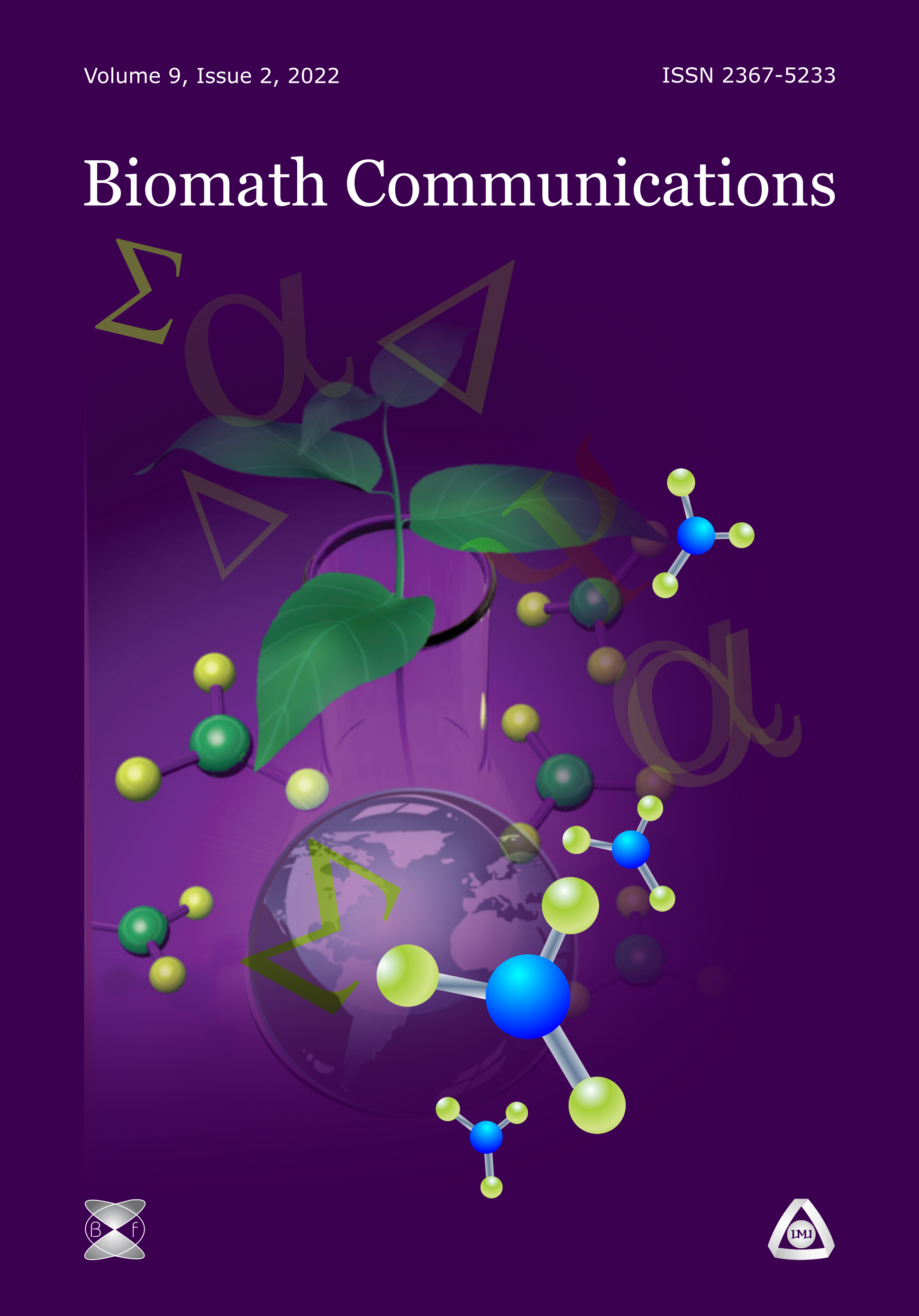Quantitative Analysis and Mathematical Models of a Partial Agonism
DOI:
https://doi.org/10.11145/cb.v3i1.645Abstract
The purpose of this research paper is to show the results of a study on Quantitative Structure-Activity Relationships (QSAR), mathematical and computer models for determination of the relation between the structure of the compounds and the induced by them measurable biological effect.
The key points of the research paper are: 1) Binding Mechanisms, 2) Docking Problem, 3) Models of partial agonism, 4) Parameters characterizing the partial agonism. The theoretical models and results presented for each of the key points are supported by experimental data obtained by studies of mu- and delta- opioid ligands for mu- and delta- opioid receptors [1].
The new results from this research are:
(a) Applying the Castillo-Katz scheme for ligand-receptor interactions;
(b) The properties of the ligands, obtained {\it in vitro} experiments, have been confirmed through molecular docking of mu- and delta- opioid receptors with mu- and delta- opioid ligands [2,3];
(c) A generalization of the Theoretical Hyperbolic Model [4] about the partial agonism, through applying the Castillo-Katz scheme;
(d) Explicit formulas for affinity and Stephenson`s efficacy of partial agonists.
Acknowledgments: This work is partially supported by the project of the Bulgarian National Science Fund, entitled: "Bioinformatics research: protein folding, docking and prediction of biological activity"Вќ, NSF I02/16, 12.12.14.
References
[1] N. Pencheva et al. (2004). Opioid profiles of Cys2-containing enkephalin analogues, Europ. J. Phamacol. 498, 249 -256.
[2] F.Sapundzhi et al. (2015). Exploring the interactions of enkephalin and dalargin analogues with the mu-opioid receptor, Bulg. Chem. Commun 47(2), 613-618
[3]В T.Dzimbova et al.(2013). Computer modeling of human delta opioid receptor,В Int. J. Bioautomation. 17, 5-16.
[4] Milanov P., Pencheva N. (2011). Hyperbolic Model of a Partial Agonism: Explicit Formulas for Anity, Ecacy and Amplication of Partial Agonists, Serdica J. Computing 5, 333-358.
Downloads
Published
Issue
Section
License
The journal Biomath Communications is an open access journal. All published articles are immeditely available online and the respective DOI link activated. All articles can be access for free and no reader registration of any sort is required. No fees are charged to authors for article submission or processing. Online publications are funded through volunteer work, donations and grants.
Authors who publish with this journal agree to the following terms:
- Authors retain copyright and grant the journal right of first publication with the work simultaneously licensed under a Creative Commons Attribution License 4.0 that allows others to share the work with an acknowledgement of the work's authorship and initial publication in this journal.
- Authors are able to enter into separate, additional contractual arrangements for the non-exclusive distribution of the journal's published version of the work (e.g., post it to an institutional repository or publish it in a book), with an acknowledgement of its initial publication in this journal.
- Authors are permitted and encouraged to post their work online (e.g., in institutional repositories or on their website) prior to and during the submission process, as it can lead to productive exchanges, as well as earlier and greater citation of published work (See The Effect of Open Access).

